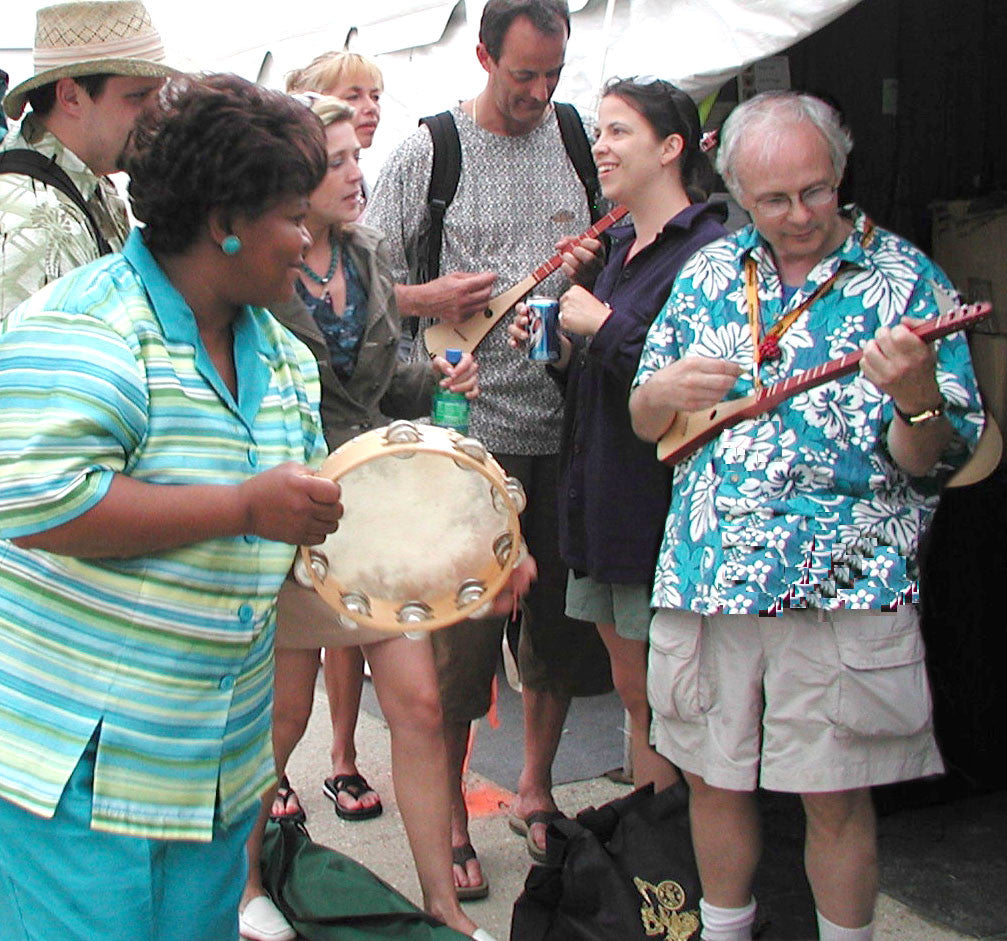Music is Easy (4)...Rhythm and Feeling
Human beings are funny creatures. We crave novelty, but are disturbed by too much change. We are comforted by sameness, yet easily bored when nothing changes. I think of this as the sameness/novelty continuum. I say continuum because we could imagine a line with one end representing complete familiarity (nothing changing) and the other representing complete novelty (nothing staying the same).
|_____________|________________|_______________|_______________|
familiarity novelty
boredom excitement
stasis (no change) chaos
safety adventure
At any point along this line we have some mix of familiarity and novelty. You'll notice I added some other pairs of words; boredom/excitement, stasis/chaos, safety/excitement. The idea is, we want some of both; we are bored when nothing new or interesting is happening, and we are terrified when too much change is happening all at once. in general, we want some mix... enough change to not be bored, enough sameness to not be disturbed.
Different parts of life call for different balances. When it comes to health, we want good health with no change (no matter how novel a stay in a hospital may be!). With our homes, we want them stable, plumbing and heat working without fail, BUT, we want to repaint or redecorate once in a while. Vacation? bring on the novelty, i may even try bungee jumping!
With music it is always an ongoing dance between familiarity and novelty. The background beat gives a safety net of familiarity, of stability. The rises and falls of melody give novelty, when the same note repeats, its a little dose of sameness, and most melodies happen within some kind of scale (a fixed series of notes) so that even as the notes change, they are changing within a familiar context. That is why Free Strumming (see previous post)works so well musically. The grid of the beat that underlies your rhythms provides familiarity. The pattern you choose to play can be the same as, or different from, the last pattern you played, giving either change or sameness. Your call! You can vary the pattern by as little as adding one extra up strum, or by as much as leaving out whole swaths of beats. Creating changing rhythms is an ongoing balance of familiarity and novelty, and is one of the best tools a musician has for creating a living, three dimensional piece of music.
Keep in mind that constant change can start to become a sameness all it's own. Establishing a steady repeated rhythm for a while sets a baseline for change to happen against. adding a bit more upstrums (offbeats) makes the energy increase (increased business, a sense of things happening faster even though the beat remains unchanged). over a short expanse of time, a sense of tension or energy increasing, of something building to a climax can be created simply by gradually adding more and more offbeats to some established rhythm. Similarly, a gradual "letting down: can be accomplished by adding fewer and fewer offbeats over a period of time. Leaving out downstrums (beats) can create drama, and draw attention to what happens right after a beat of silence. Sudden shifts from many upstrums to no upstrums can make a dramatic fall, and the reverse a dramatic rise in emotional intensity.
The ultimate result we are seeking is the emotional state of the listener. Do we want them excited, calmed, inspired, soothed, saddened, made hopeful, frightened, made curious, made fulfilled, made thrilled or relaxed? All of these emotional states, and changes from one to the other, can be accomplished by rhythm changes alone. When we add variations in melody, harmony, words with meaning, and different combinations of instrument tones, it is no wonder that music has an ability to fascinate, charm, excite, and heal.
As we continue to look at Music and Creativity in subsequent articles, we will look at different aspects of music, and we will often address the balance of familiarity and novelty to create an emotional effect. The video Rhythms Basic 3 is a great way to see the effects of Free Strumming and the balance of familiarity and novelty demonstrated on Strumstick.






Leave a comment (all fields required)